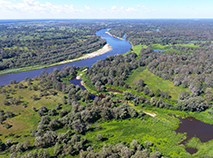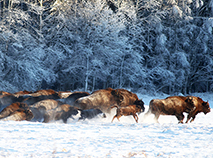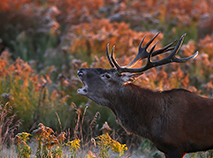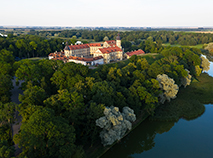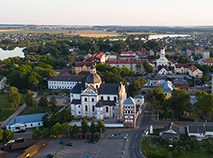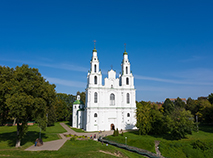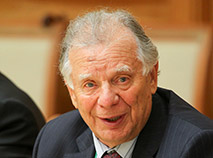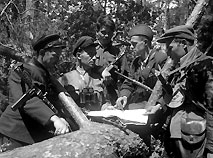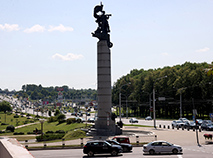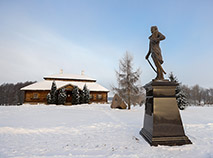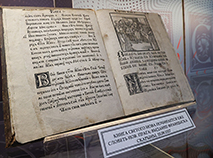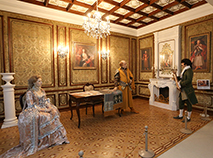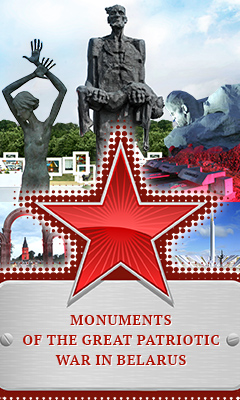Did you know?

Frantsisk Skorina's Bible
Little known facts about BelarusPripyatski National Park is the only place where you can find primeval lowland oak-woods
The lowlands of the Belarusian Polesye have survived in their primeval state. Over 30 lakes are hidden in oak and ash-tree woods. Polesye’s natural marshes are the biggest in Europe. The largest marshes are Zvanets (150 square kilometres) and Dzikoye (80 square kilometres)
Belovezhskaya Pushcha is the largest ancient forest in Europe
Antique historian Herodotus (fifth century B.C.) wrote about the forest. It was also mentioned in the Hypatian Chronicle (in 983). In the late fourteenth century, Duke Yagailo of the Grand Duchy of Lithuania declared the forest a protected area and prohibited hunting there. The ancient forest has been protected for almost 600 years. There are nearly 2,000 giant trees in the Belovezhskaya Pushcha, some of them pre-dating Columbus' discovery of America. The Belovezhskaya Pushcha has since been added into the UNESCO World Heritage List.
Nesvizh was owned by the Radziwills, one of Europe’s richest families
The major part of Nesvizh was designed by Italian Jan Giovanni Maria Bernardoni. His designs were used to construct the castle and the Corpus Christi Cathedral in the sixteenth century. The Corpus Christi Cathedral was the first baroque-style building in Rzeczpospolita. Numbering 102 sarcophagi, the necropolis of the Radziwill family is one of the largest in Europe. Nesvizh Castle is included on the UNESCO World Heritage List.
Belarus has the world’s largest population of bison, the majority of which live in the Belovezhskaya Pushcha
These are the heaviest mammals on the European continent, the last European representatives of bison. Mikola Gusovski wrote his famous song about the bison at the request of Pope Leo X.
One of three East-Slavonic St. Sophia Cathedrals is situated in Belarus
This architectural landmark was built in Polotsk between 1044 and 1066 during the reign of Duke Vseslav of Polotsk. The cathedral was built as a symbol of equality with the most powerful Old Russian towns – Kiev and Novgorod, where cathedrals to St Sophia were also built.
Belarus was one of the first nations in Europe to have its own printed Bible (1517)
Belarus’ first printer Francysk Skaryna started his publishing business in Prague where he printed 23 illustrated Bibles. They were published in the old Belarusian language. In the early 1520s he moved to Vilno where he founded a publishing house. It printed the Small Travel Guide and Book of the Apostles. Francysk Skaryna's works were distinguished by high print quality, unique illustrations and distinctive typefaces.
Fifteen Nobel Prize winners have Belarusian roots
This most prestigious international prize was instituted more than 100 years ago. Several Nobel Prize winners have Belarusian roots, including Nobel prize winners in economy, chemistry and physics – Zhores Alferov, Simon Kuznets, Aaron Klug; and Nobel Peace Prize winners – Yitzhak Rabin, Menachem Begin and Shimon Peres.
The Belarusian partisan movement in WWII was the strongest resistance movement in Europe
By 1943 the partisans controlled about 60% of Belarusian territory. Europe’s largest Jewish partisan detachment led by the Belskys brothers fought in Belarus. The heroic struggle of the detachment is depicted in a movie Defiance directed by Edward Zwick from a screenplay by Zwick and Clay Foreman. The movie premiered in January 2009.
The Slutsk belts were woven only by men
The belts were worn only by men and only men could help the belt owners put them on. There was a superstition that a woman’s touch would tarnish the fabric and eventually destroy it. The famous belts were produced solely by the Slutsk manufacture.








 print version
print version make home page
make home page add to bookmarks
add to bookmarks